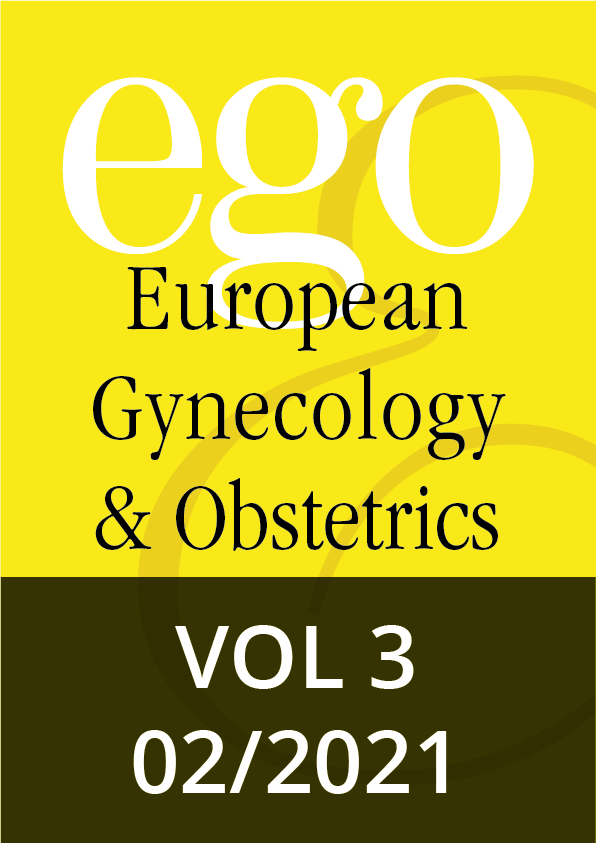Short reviews, 060–062 | DOI: 10.53260/EGO.213021
Systematic review, 063–071 | DOI: 10.53260/EGO.213022
Case reports, 072–075 | DOI: 10.53260/EGO.213023
Case reports, 076–078 | DOI: 10.53260/EGO.213024
Case reports, 079–081 | DOI: 10.53260/EGO.213025
Case reports, 082–085 | DOI: 10.53260/EGO.213026
Original articles, 086–090 | DOI: 10.53260/EGO.213027
Original articles, 091–095 | DOI: 10.53260/EGO.213028
Original articles, 096–099 | DOI: 10.53260/EGO.213029
Original articles, 100–107 | DOI: 10.53260/EGO.2130210
Original articles, 108–112 | DOI: 10.53260/EGO.2130211
Prenatal diagnosis of congenital heart defects: quality analysis of telemedicine using four-dimensional ultrasound with spatiotemporal image correlation
Abstract
Objective: To determine whether four-dimensional (4D) tele-ultrasound imaging is a reliable diagnostic tool for assessing congenital heart defects.
Methodology: Clinical investigators from 10 Spanish prenatal diagnosis centers participated in this study. Each participant was requested to upload between four and six retrospective cases onto a centralized file protocol server (4D tele-ultrasound volume data sets) to be analyzed “off line” by the other investigators. The rate of normal and heart defect cases was variable and unknown to the rest of the participants.
Results: A total of 56 cases were uploaded (37 normal and 19 with congenital heart defects), and 504 diagnostic assessments were provided. The quality of the volume data sets acquired was analyzed. In 14 of the diagnostic assessments, the result was inconclusive (2.8%). The procedure obtained a sensitivity of 88.7% (83.5 – 93.9), a specificity of 94.2% (91.6 – 96.9), as well as a false negative rate of 10.5% (18/171) and false positive rate of 5.7% (19/333). There was good inter-center agreement (k=0.74). Quality control of the diagnosis in pathological cases was performed using the American College Radiology score.
Conclusions: Appropriate acquisition of volume data sets is important for subsequent “off-line” diagnosis. The sensitivity and specificity values obtained in this study confirm that tele-echocardiography is a useful procedure for the identification of congenital heart diseases. In addition, implementation of a quality control score provides 4D ultrasound imaging with the characteristics of an optimal training tool.
Keywords: Congenital heart defects, fetal echocardiography, four-dimensional ultrasonography, prenatal diagnosis
Citation: Tajada M.,José Boillos M.,Azumendi G.,Carlos Bello J.,De Paco C.,Galindo A.,et al. Prenatal diagnosis of congenital heart defects: quality analysis of telemedicine using four-dimensional ultrasound with spatiotemporal image correlation, EGO European Gynecology and Obstetrics (2021); 2021/02:091–095 doi: 10.53260/EGO.213028
Published: May 1, 2021
ISSUE 2021/02

Short reviews, 060–062 | DOI: 10.53260/EGO.213021
Systematic review, 063–071 | DOI: 10.53260/EGO.213022
Case reports, 072–075 | DOI: 10.53260/EGO.213023
Case reports, 076–078 | DOI: 10.53260/EGO.213024
Case reports, 079–081 | DOI: 10.53260/EGO.213025
Case reports, 082–085 | DOI: 10.53260/EGO.213026
Original articles, 086–090 | DOI: 10.53260/EGO.213027
Original articles, 091–095 | DOI: 10.53260/EGO.213028
Original articles, 096–099 | DOI: 10.53260/EGO.213029
Original articles, 100–107 | DOI: 10.53260/EGO.2130210
Original articles, 108–112 | DOI: 10.53260/EGO.2130211
